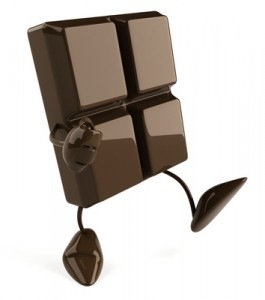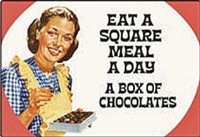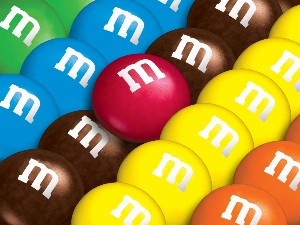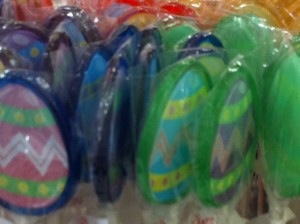 I was in a restaurant the other night and the server brought a bunch of those individually wrapped dark chocolates along with the bill. There were six of us at the table so there was a small pile of the foil wrapped goodies on the table.
I was in a restaurant the other night and the server brought a bunch of those individually wrapped dark chocolates along with the bill. There were six of us at the table so there was a small pile of the foil wrapped goodies on the table.
I watched an almost four year old girl (who has an incredible sweet tooth – especially for chocolate) wrap her little fist around as many as she could fit into her vice like grip – until her Father took notice and parsed out one — much to her dismay, or should I say, extreme annoyance.
Caffeine And Chocolate
Here are a couple of facts about chocolate and caffeine that most people don’t know:
Chocolate contains caffeine – not enough to give you a big time boost, but, depending on the type of chocolate, enough to register — especially if you’re a little kid stuffing in a couple of squares or a bunch of mini chocolate bars.
It would take about 14 regularly sized (1.5 oz) bars of milk chocolate to give you the same amount of caffeine that you’d get from an 8 oz cup of java. Along with that little caffeine buzz you’d also be shoving in about 3,000 calories and more than 300 grams of sugar. If you’re looking for caffeine, coffee seems like a better bet at about two calories in an 8 oz cup of black coffee.
Dark chocolate, the kind now frequently found in those “after dinner along with the check foil wrapped squares,” has more caffeine content than milk chocolate. But, it would still take four regularly sized bars to get the same amount that you’d find in one cup of black coffee.
Something To Think About
The next time you find yourself reaching for those foil wrapped chocolate squares after dinner (or the ones placed on your pillow in some hotels) think a cautionary caffeine note if you want a restful sleep.
It’s also worth it to remember that getting kids (and some adults) to sleep on Halloween might have a whole lot to do with not just the sugar but also the amount of caffeine in the chocolate candy in trick or treat bags.
Caffeine In Chocolate
- Hershey’s Milk Chocolate Bar, 1bar/1.55 oz: 9 mg caffeine
- Hershey’s Special Dark Chocolate Bar, 1 bar/1.45 oz: 20 mg caffeine
- Hershey’s Kisses, 9 pieces: 9 mg caffeine
- Hershey’s Special Dark Kisses, 9 pieces: 20 mg caffeine
- Scharffen Berger Milk 41% Cacao, ½ bar: 17 mg caffeine
- Scharffen Berger Extra Dark 82% Cacao, ½ bar: 42 mg caffeine
- Dagoba Milk Chocolate 37% Cacao, ½ bar: 9 mg caffeine
- Dagoba Dark Chocolate 73% Cacao, ½ bar: 36 mg caffeine
Caffeine In Coffee:
- Coffee, generic brewed, 8 oz: 133 mg caffeine (range: 102-200; 16 oz, 266 mg caffeine)
- Dunkin’ Donuts regular coffee, 16 oz: 206 mg caffeine
- Starbucks Brewed Coffee (Grande), 16 oz: 320 mg caffeine
- Coffee, generic instant, 8 oz: 93 mg caffeine (range 27-173)
- Espresso, generic, 1 oz: 40 mg caffeine (range 30-90)
- Starbucks Espresso, solo, 1 oz: 75 mg caffeine
- Coffee, generic decaffeinated, 8 oz: 5 mg caffeine (range 3-12)



